Squeezed in between the Harlem River and Yankee Stadium in the southernmost Bronx is a small neighborhood known as Mott Haven, after Jordan Mott, who built a tremendously successful iron works beginning in 1828 (the iron works continued to 1906), centered along the Harlem River from about 3rd Ave. to E. 138th St. His handiwork is still seen all over town on airshaft and manhole covers built by the Mott Iron Works. Mott bought the original property from Gouverneur Morris II in 1849; Morris was asked if he minded if the area was called Mott Haven, a name it had quickly acquired. "I don't care... while [Mott] is about it, he might as well change the Harlem River to the Jordan." The iron works produced practical and ornamental metalwork used worldwide.
Mott, inventor of a coal-burning stove and a machine that weaved tape, in 1828 established a factory west of 3rd Ave., between E. 134th and the Harlem River. The venture prospered and grew. Mott founded the village of Mott Haven, whose monogram, MH, persists in the mosaics of the 138th St. station of the #4 train.
Mott was granted over 50 patents. Trellises and ornamentation that were cast in the Bronx foundry are still encountered worldwide, from Turkey to Japan and throughout South America. Manhole grates and covers in NYC bear the inscription J.L. Mott. The four extant buildings, on 3rd Ave. near the Harlem River, were constructed between 1880 and 1892 during a period of growth.
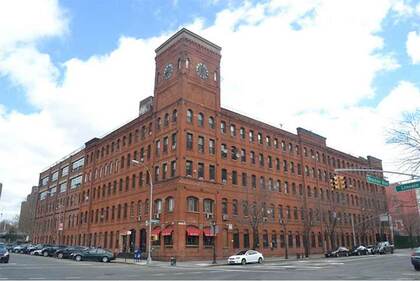
The Estey Piano & Organ Company was one of the most important players in the late-19th and early-20th century manufacturing business. For decades, Estey manufactured several lines of upright pianos, player pianos and grand pianos. Estey instruments are known as exceptionally well-made, and they’re worth restoration and preservation today. Production under the Estey name was discontinued sometime in the 1970s. Estey, centered in Bluffton, Indiana, since 1869, built this clock-tower factory at Lincoln Ave. and Bruckner Blvd. (then E. 133rd St.) in 1888.
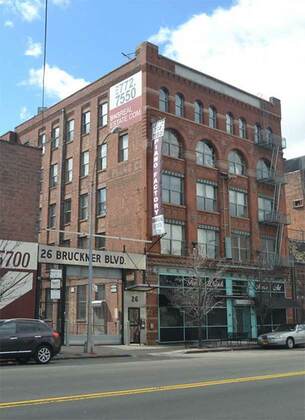
Haines Brothers Piano Company was established in 1851 by Napoleon J. Haines and his brother Francis W. Haines in New York City. For the first 20 years, they built a selection of Square Grand Pianos before their first upright pianos in 1870. Haines Brothers was known for high-quality instruments and were very popular for several decades. Their grand and baby grand pianos became popular after the turn-of-the-century. In the 1920s, Sherlock-Manning Piano Company took control of Haines Brothers, building the Haines Brothers brand name until ceasing operations in 1945. Just before the Great Depression era, Kroeger was taken over by industrial giant Kohler & Campbell. Kohler & Campbell continued to build the Kroeger name well into the 1950s.
26 Bruckner Boulevard’s dramatic arched windows and swirled sandstone flourishes make it a powerful example of the Romanesque revival industrial architecture, which was popular in the 1880s but had waned in prominence by the end of the 19th century.
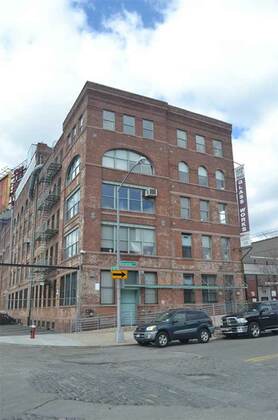
Krakauer Brothers was founded in 1869 by Simon Krakauer, his son David and his brother Julius in New York City. Krakauer was known for building superior quality pianos in the late-19th and early-20th centuries. In 1917 Krakauer incorporated the Madison Piano Company. Because of their superior quality among discriminating pianists, Krakauer Brothers was one of the few American piano companies to survive the Great Depression. Krakauer continued to build pianos until 1980 when it was sold to the Kimball Piano Company, although Kimball did produce the Krakauer name for a few years before it went out of business in the late-1980s.
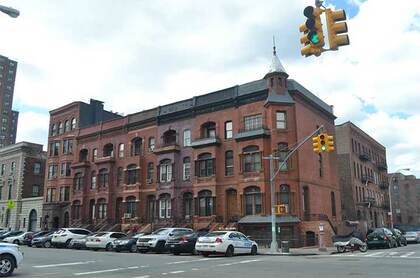
This five story brick apartment house at 260-266 Alexander Ave., located on the corner, was built in 1892-1893 as part of a row of 17 apartment houses extending along Alexander Ave. and 137th and 138th Sts. It was designed in the Queen Anne style by Carl A. Miliner for John Cotter and provided apartments for eight families as well as ground-floor stores.

St. Ann's Episcopal Church, St. Ann's Ave. between E. 139th and E. 141st Sts., is The Bronx's oldest church, built in 1841 and dedicated to Gouverneur Morris' mother. Several members of the Bronx’ most noted families of the colonial era and beyond are buried in the church's graveyard, including Gouverneur and Lewis Morris. Before much of Mott Haven was purchased by Jordan Mott for his iron works in the 1840s, Mott Haven was owned by the Morris family.
Lewis Morris (1726-1798) served in the Continental Congress from 1775-1777, and in the NY state legislature between 1777 and 1790. He signed the Declaration of Independence in 1776. His great grandfather (Richard, died 1672) had immigrated to New York through Barbados after being part of Oliver Cromwell's army in the English Civil War of 1648. He purchased the first tract of land in the Bronx that became the basis for the Morrisania manor.
Gouverneur Morris (1752-1816), half-brother of Lewis Morris, was a political leader, diplomat, U.S. Senator, and American ambassador to France, where he resided during the French Revolution. He supported slavery and was an outspoken opponent to what he termed “unchecked popular democracy.” On the other hand, he assisted in the formulation of Manhattan’s street grid plan. His son, G. Morris II, sold the estate to Jordan Mott.
Gouverneur Morris was outspoken and brash, but became ambassador due to his thorough knowledge of French and its nuances. In his youth, he’d drive teams of horses without the benefit of reins, yelling and cracking a whip instead, but one day one of his teams ran off and he was dragged, winding up with a crushed leg. For the rest of his life he hobbled along on a wooden leg, like a Dutch predecessor, Peter Stuyvesant.
Also interred here is Judge Robert H. Morris (1802-1855), a three-term mayor of New York City from 1841 to 1844.
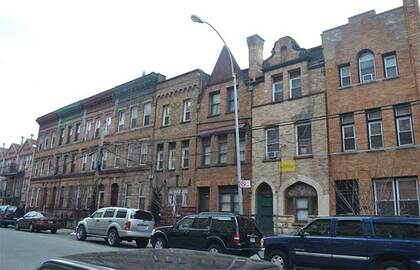
In the 1890s, three rows of attached houses were erected on E. 136th St. between Willis Ave. and Brown Pl. These three rows, comprising a total of 20 houses, were built by Edward D. Bertine, who spent $63,500 amassing property on 136th St. in 1891. Little’s known about Bertine. Listings in New York City directories indicate that he was a Manhattan milk dealer in the 1870s and early-1880s, branching into groceries by 1883. In 1889-90, Bertine first appears in the directory as a builder. All of the buildings that Bertine is known to have erected are in the Bronx, and, following the completion of his first row on E. 136th St., he moved into a house on the block. In 1891 Bertine began construction on a row of houses on the south side of E. 136th St.
Designed by architect George Keister, this is one of the finest rows erected in New York City in the late-19th century. Keister designed several theaters in the Times Square area, including the Selwyn and the Belasco, as well as the Apollo uptown. Other houses in the Bertine rows were designed by architects John Hauser and Adolph Balschun Jr. Each house is faced with tawny brick above a rock-faced stone base, and ornamented with trim in brick, stone, stained glass, and slate. There’s a variety of design elements, including those of Romanesque, Gothic, and Flemish origin.
—Kevin Walsh is the webmaster of the award-winning website Forgotten NY, and the author of the books Forgotten New York (HarperCollins, 2006) and also, with the Greater Astoria Historical Society, Forgotten Queens (Arcadia, 2013)

